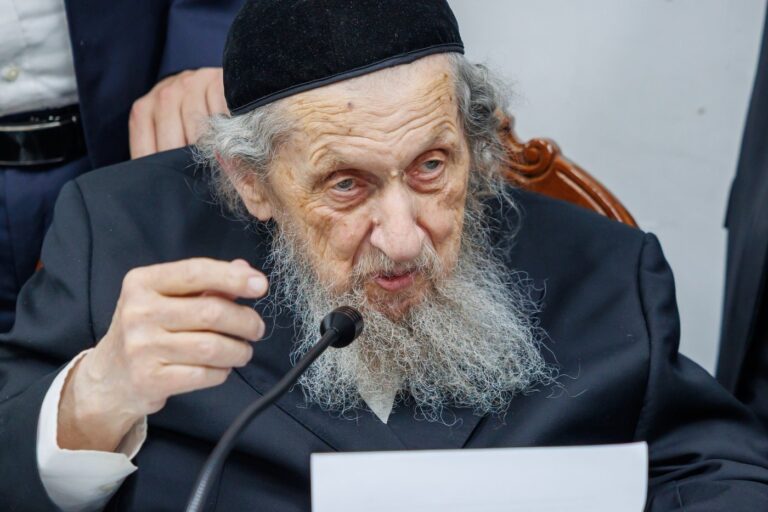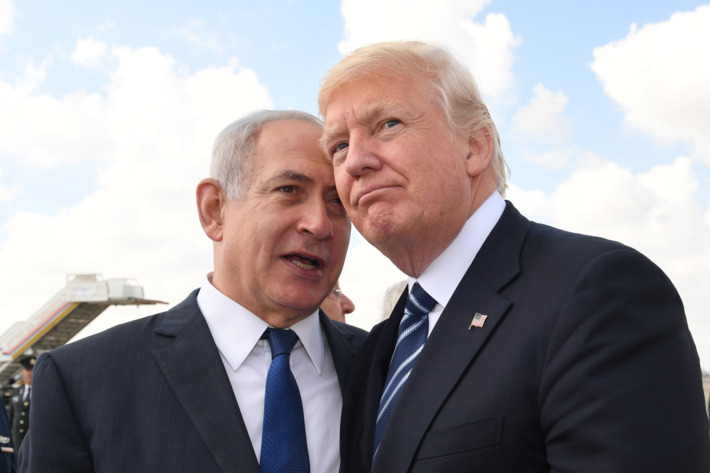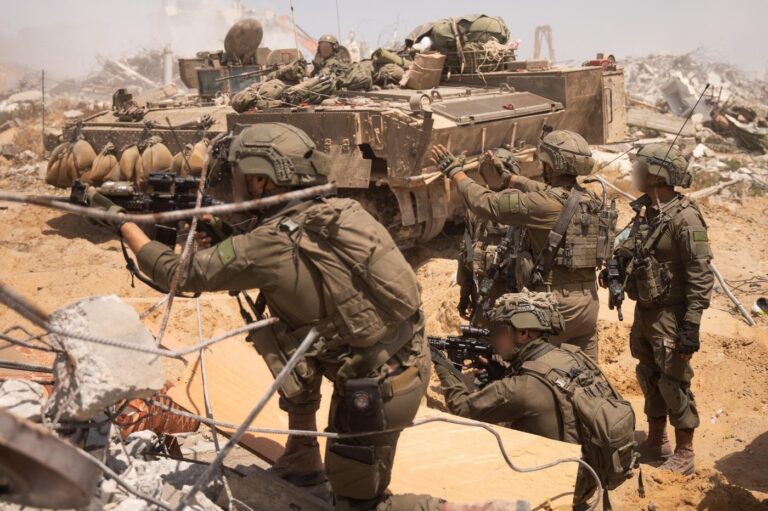 By Rabbi Yair Hoffman for the Five Towns Jewish Times
By Rabbi Yair Hoffman for the Five Towns Jewish Times
The tenth of Nissan, 5777, marks the ninth Yartzeit of Moreinu HaGaon haRav Alter Chanoch Henoch Leibowitz zatzal. Below are some of his Pesach Minhagim followed by a short biographical sketch. This is being published by the author l’zecher nishmaso.
SHABBOS HAGADOL
The Rosh Yeshiva was noheg like the Vilna Gaon and not the Ramah, and did not recite the Hagaddah on Shabbos HaGadol.
MECHIRAS CHOMETZ
The Rosh Yeshiva sold his chometz through Rabbi Avrohom Ginsberg z”l, the Rav of the shul in the Yeshiva. Rav Chaim Pinchas Scheinberg zt”l had originally set up the mehalech of the mechira. Later, it was handled by Rav Asher Zimmerman, and after that by Rav Paltiel Friend. The Chofetz Chaim Rabbonim and the Rabbonim in Queens did the mechira together. Another Rav wished to join and tried to initiate more kinyanim. He was strongly discouraged from changing their Mesorah on how it was to be done.
MATZOS
Originally, the Yeshiva had a Matzah baking Chaburah led by Rav Avrohom Kanarek Shlita in the Pupa Bakery in Williamsburg. After Rav Kanerek left to Eretz Yisroel, Rav Hershel Welcher Shlita took it over. The Rosh Yeshiva zt”l pre-ordered Matzos from Rav Kanarek and later from Rav Welcher. There is an inyan to pre-order in order to fulfill the Mitzvah of Ushmartem es haMatzos.
BDIKAS CHOMETZ
For Bdikas Chometz he did a shorter version, relying on the cleaning that was done in the previous days. The Rosh Yeshiva used to begin Bedikas Chametz with a candle and then would continue with a flashlight. The Rosh Yeshiva said that by Bedikas Chametz you don’t need the wooden spoon and feather, rather anything that allows you to brush up the crumbs is fine.
He was thorough and appointed shluchim who joined in the Bedikah. He would open the drawer and would point to where Chometz was actively brought in.
The Biur Chometz was done in the yeshiva in a garbage can in the back. In his later years when the Yeshiva was in Forest Hills, he didn’t go, and rather appointed a shliach to burn his Chometz for him. When the Yeshiva moved to Kew Gardens Hills, he went outside again for the Biur Chometz.
HACHANOS
The Rosh Yeshiva did not actively participate in pre-Pesach hachanos. Rather, he spent most of the day on the telephone wishing everyone many people a gut Yom Tov. He called numerous almanos and older people, including Rebbitzen Farber, the almanah Rebbitzen Bender (whose husband was a talmid of Rav Dovid), other talmidim of Reb Dovid. He also called people that helped the yeshiva.
He would sometimes go to the Trops in Chicago, for Pesach. The year that his father-in-law Rav Avrohom Trop passed away, he invited the boys who had taken care of him to the second night Seder. They were – R. Yingy Yachnes, R. Binyomin Luban, and others.
To preserve his energy for the Seder, he would lay down for an hour after maariv before the seder began.
THE SEDER
KADESH
The Rosh yeshiva sat for Kiddush, he did not stand for the first part of the pasuk when it fell on Shabbos. He used red wine. The kos he used was that of his father, Reb Dovid, zt”l. It was a smaller shiur and one that he had a Mesorah to use from Slabodka.
When there were children present at the Seder, the Afikomen was stolen.
URCHATZ
He got up to wash elsewhere and did not have the water brought to him.
KARPAS
His minhag was to use a potato for Karpas. That was his father’s minhag and what was done in Slabodka.
YACHATZ
For Yachatz he would place the larger portion for Afikomen off the table next to him on the chair. He often joked to whomever was present not to steal it.
MAGGID
He refrained from saying Shmuessim, and rather said the hagaddah on Maggid. He did not delve long on it, but when there were guests he listened patiently to their Divrei Torah on the haggadah. He mentioned a number of times that the Hagaddah was primarily for the children. He spoke at length in hashkafa during the Seudah. Much of the seder was spent on the niggunim after Shulchan Orech.
For Dam, Tz’fardeah, kinnim, he would pour out the wine rather than use his finger to take out drops.
RACHTZAH
He got up to wash his hands in the kitchen and did not have water brought to him.
MOTZI MATZAH
The shiur Matzah he would use was that of half an egg for a kzayis. But he held differently than the position of Rav Moshe Feinstein zt”l. Rav Moshe’s opinion was that the measurement had to be crushed and the air holes should not be counted. The Rosh Yeshiva disagreed with this position, as this was not his Mesorah. He counted it with the air holes. He would also be meshayer the shiur by estimation – tvias ayin alone. When someone measured it, it turned out to be a half of a Shmurah Matzah.
MARROR
The Rosh Yeshiva used lettuce for Marror and distributed to the guests himself.
HALLEL
He sang Hallel with a nigun and most of the time did it with Chazanus, using the Yeshiva niggunim. He took a lot of time at Hashem Zecharanu yevarech.. Hallel took a significant amount of time.
NIRTZAH
He had a slabodka niggun for Echad mi yodea – one niggun was half Yiddish half lashon hakodesh. One year he took time to try to teach it to someone.
CHOL HAMOED
On Chol hamoed, the Rosh Yeshiva was careful to wash for 3 seudos every day. During the year he didn’t wash for lunch.
GEBROCHTS
The Rosh Yeshiva ate gebrochts. When he had Talmidim over who came from families that were careful to avoid gebrochts he asked them to obtain reshus from their father to allow them to eat gebrochts before he invited them.
Generally speaking the Sedorim at the Rosh Yeshiva’s home were very easy-going, fun and contained much singing.
Rav Leibowitz was the only son of his saintly father, Rav Dovid Leibowitz, zt’l, founder of Yeshiva Rabbeinu Yisroel Meir HaCohen, commonly known as Yeshiva Chofetz Chaim. Rav Dovid was the Rebbe of numerous Gedolim, including Rav Gedaliah Schorr zt”l, Rav Avrohom Pam, and many others.
The Yeshiva was first established in 1933 by Rav Dovid Leibowitz, a nephew of the Chofetz Chaim. Prior to that Rav Leibowitz was a Rosh Yeshiva in yeshiva Torah VoDaas. On Thursday, December 7, 1941, Rav Dovid Leibowitz passed away, and his son would take over at the helm of the yeshiva. The Levaya was delayed until Sunday, and was held in Torah VaDaas.
Rav Henoch Leibowitz molded the yeshiva in the image of the great yeshiva of his father’s Rebbe, the Alter of Slabodka. Indeed, Rav Mordechai Shulman, zt’l, a rosh yeshiva in Eretz Yisrael who had intimate knowledge of the Slabodka Yeshiva, commented, “Yeshiva Chofetz Chaim is Slabodka.”
Slowly but surely, Rav Henoch Leibowitz shaped and molded his talmidim to be talmidei chachamim, Baalei Mussar, and mentchen. He further imbued them with a sense of mission to do and work for Klal Yisrael. The greatest achievement for one of his talmidim was to merit to be a marbitz Torah in Klal Yisrael.
Rav Henoch Leibowitz’s talmidim opened up high schools across the nation and beyond—in Miami, Los Angeles, Rochester, Milwaukee, and Ottawa, to name just a few. Rav Leibowitz nurtured his talmidim and the mosdos they had set up. Soon, Chofetz Chaim became a major force in American Judaism. Entire Torah communities were to spring up around the Chofetz Chaim branches. These communities yielded fruit. Many graduates of the Chofetz Chaim schools entered harbatzas Torah themselves, in every capacity.
The attitude of Rav Henoch’s talmidim created a major turning point and shift in the field and in the public perception of Jewish education, which affected all other yeshivos, as well. A career of harbatzas Torah became a lofty profession, something that the elite should aspire to achieve.
Rav Leibowitz focused his efforts on developing his students in three major areas.
He felt that mechanchim, indeed, everyone, should strive to achieve the highest level of iyun (in-depth study) possible. Toward this end, Rav Leibowitz spent countless hours with his students, teaching them how to unfold the latent processes of reasoning in a Talmudic text. He taught them to highly esteem the words of the Maharsha and to home in on the essence of an argument between the Maharam and the Maharsha. And he taught his talmidim to appreciate the words of the Acharonim, too.
He taught them to focus very closely on the shift between a text’s initial supposition and the turning point in its final conclusion. “What is the shift between the havah amina and the maskana?” was a question he often asked. Most importantly, he taught his students the notion that the Torah they say must be “muchrach” – that each and every piece of Torah they spoke had to be both textually and logically compelling. He eschewed the methodologies of baseless chakiros (logical inquiry and differentiation) and the standard use of “reid” when understanding Torah texts. The yeshiva was well known for the thorough manner in which the talmidim examined the texts they were learning. Shiurim were not just heard once; they were worked on for days and sometimes weeks, so as to understand and appreciate every nuance. (This slow pace, however, was limited to the morning iyun seder. Indeed, for the afternoon and evening bekiyus sedarim, the Rosh Yeshiva instituted a quota system, where a minimum number of blatt had to be learned each week.)
The second area in which Rav Leibowitz “grew” his talmidim was in the area of mussar thought and texts. Talmidim were taught how to develop a genuine mussar insight, either in psychology or midos or some other area of Torah growth. Such insight, of course, also had to be logically and textually compelling. The true “Slabodka shmuess” was not an exposition of drush comprised of any Torah thought that comes into the talmid chacham’s mind; no—it had to be derived and based upon a previous Torah text: a Ramban, a Seforno, a Rashi, a Midrash. Otherwise, the integrity of Torah could be compromised, if people’s own ideas were read into the text and represented to the world as Torah.
Thirdly, Rav Leibowitz imbued his students with a sense of mission toward Klal Yisrael. His talmidim were in the forefront of chinuch and the revitalization of Torah throughout North America. His students opened Torah institutions and branches in many cities, including Los Angeles, San Diego, St. Louis, Cherry Hill and Manalapan (New Jersey), Cedarhurst, Huntington, Monsey, New York City, Vancouver, Ottowa, Phoenix, and Dallas—and in places in Eretz Yisrael, too.
He personified the midah of emes, as well. Once, for example, a wealthy individual gave a $10,000 donation that was doubled by his corporation’s matching-funds program. The problem was that the donor’s check did not clear. Rav Leibowitz promptly refunded the corporation’s money. Any behavior otherwise was sheer anathema to him. He was a genuine Torah sage in every way, and he would never countenance any form of dishonesty, chalilah.
Rav Leibowitz had a warmth and a smile that conveyed his love for each member of Klal Yisrael. He also had a great sense of humor, which he utilized to connect with talmidim, baalei batim, and other members of Klal Yisrael.
Rav Leibowitz personified the idea of sensitivity toward others and making sure that people realized what it means to cause anxiety to others. A typical shmuess of Rav Leibowitz involved examining Rashi’s comments regarding the person who cursed the name of Hashem, found at the end of Parashas Emor. The pasuk says, “Vayanichuhu ba’mishmar,” they placed him under guard. Rashi comments: “Alone—and they did not leave the person who gathered [sticks] with him.” Why? Rashi explains that even though they both committed their sins during the same time period, one of them, the gatherer of sticks, incurred the death penalty; they just did not know which particular death penalty. But regarding the one who cursed G-d, they did not know what his punishment was to be at all.
Rav Leibowitz asked, how does this difference explain why these two prisoners were housed separately? He answered that they were placed in separate locations to avoid the additional anxiety that the one who cursed G-d would feel if he observed that they housed him with someone who incurred the death penalty. How sensitive we must be to each tzelem Elokim, if even a criminal deserves this sensitivity. The lesson is even more profound when we examine the words of the Da’as Zekeinim. From there we see how particularly heinous the blasphemer who cursed Hashem actually was. And yet we see that we should be sensitive to his anxieties.
The Rosh Yeshiva was a strong proponent of a muchrach approach to meforshim, but would love the drush of the Chasam Sopher. Indeed, he said that if one wishes to get into the Hagaddah, some drush from the Chasam Sofer is very good, along with a shmuess or a darher. Yet the Rosh Yeshiva did not shtell too long on Maggid. He once said that the Seder is to encourage children, and often dwelling on pshatim for too long one can lose the children.
The author can be reached at [email protected]
Rav Henoch Leibowitz zt”l was one of the author’s three Rebbeim.











One Response
Thank you very much Rabbi Hoffman. Great article, as usual.